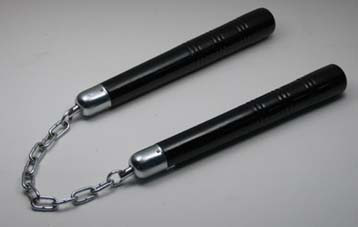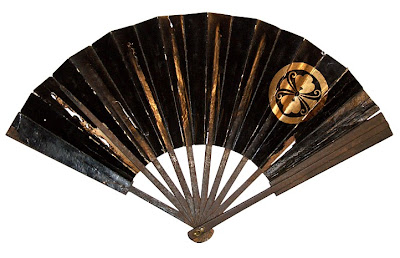Brutal metal-link whips, miniature swords disguised as tobacco pipes, fans edges with razor-sharp blades and poison-tipped arrows are all lethal in their own right but pale in comparison with an almost mystical weapon of decapitation.

Also known as �chuttuval,� which means �coiled sword,� this flexible weapon is used in the South Indian Martial Art of Kalaripayatt.
The blade (or multiple blades, as in the urumi pictured here) is flexible enough to be rolled up and stored when not used, or even worn as a belt and whipped out on demand.
The blade or blades are typically razor-sharp and bad news for anyone standing in the vicinity of the person wielding the urumi.

2. The Tekko-kagi (�hand claws�)

Ninjas would use the tekko-kagi claws to guard against sword attacks, allowing them to swipe and potentially knock the sword from an assailant�s hands.
Or, ninjas could use claws the claws offensively against their opponents with devastating results.
Typically made from aluminum, steel, iron or wood, tekko weapons are believed by martial arts historians to have originated when the Bushi in Okinawa, Japan began wielding the steel shoes of their horses as a means of self-defense against assailants.

3. The Kusari-gama

Kusari-gama is a traditional Japanese weapon that consists of Scythe-like blade,Kama, on a metal chain with a heavy iron weight at the end.
This weapon came from the design of the farmer�s scythe but this was not a weapon that farmers used.
The art of handling the Kusarigama is called Kusarigamajutsu.
4. The Nunchaku

A nunchaku is two sections of wood (or metal in modern incarnations) connected by a cord or chain. Chinese nunchaku tend to be rounded, whereas Japanese are octagonal.
The traditional nunchaku is made from a strong, flexible hardwood such as oak, loquat or pasania. Originally, the wood would be submerged in mud for several years, where lack of oxygen and optimal acidity prevent rotting.
The end result is a hardened wood. The rope is made from horsehair, and was traditionally claimed to be able to block a sword. Finally, the wood is very finely sanded and rubbed with an oil or stain for preservation.
5. The Meteor Hammer & Rope Dart

This weapon is comprised of a long rope with twin metal weights, �hammers�, or darts on each end. When used as a weapon, the hammer or dart on the front end is used for attack and the other for protection.
The rope wraps around the neck, back, shoulder, elbow, wrist, thigh, foot, or waist. When the hammer or dart is released, it strikes outward with stunning and surprising speed. It is one of Chinese martial arts� most unique and difficult-to-master weapons.
6. San-Jie-Gun (Three Section Staff)

The three sectional staff, is a historical weapon, which appears in the Chinese book �Sangokushi�. Its distinctive feature is three 70 cm sticks chained together making it much longer than a long staff.
It can be swung around, or as a staff, using one�s whole body space to fend off an attacker. A Chinese weapon constructed from three pieces of wood connected by metal rings at their ends. Lengths of the sections are roughly equal, each about the length of the practitioner�s arms (with the diameter around one inch).
The three sectional staff can be used as a long range weapon when held at one end and swung freely, or a short-range weapon when two of the sections are held and used to strike or parry.
7. Shurikens (Throwing Star)

One of the most popular weapons of the Ninja, the shuriken was used as more of a distraction than an actual weapon. Although they can hurt they rarely penetrate deep enough to kill. Shurikens come with anywhere from 4 to 12 points traditionally.
8. Tessen (Iron Fan)

Folding fans with outer spokes made of iron which were designed to look like regular, harmless folding fans or solid clubs shaped to look like a closed fan.
Samurai could take these to places where swords or other overt weapons were not allowed, and some swordsmanship schools included training in the use of the tessen as a weapon.
The tessen was also used for fending off arrows and darts, as a throwing weapon, and as an aid in swimming, like hand-flippers.
No comments:
Post a Comment